Picture stepping into a sleek pod that whisks you from Toronto to Montreal in just 45 minutes, gliding through a near-vacuum tube at speeds over 1,000 km/h. This isn’t science fiction—it’s the hyperloop, and it’s closer to reality than you might think. As revolutionary as the introduction of railways in the 1800s, hyperloop technology promises to transform how we connect with nature, work, and each other. By 2030, these sustainable, weather-proof tubes could slash travel times between major cities while producing zero direct emissions. From reducing highway congestion to creating new eco-tourism corridors, hyperloop systems represent more than just fast travel—they’re a gateway to reimagining how we experience our world. Join us as we explore how this groundbreaking technology is set to reshape our relationship with distance, time, and the great outdoors, making weekend getaways to remote parks as convenient as a downtown commute.
The Vision: Parks Just Minutes Away
From City to Wilderness in 20 Minutes
Imagine stepping onto a hyperloop pod in downtown Toronto and arriving at the pristine wilderness of Algonquin Park just 20 minutes later. This isn’t science fiction – it’s the future of park accessibility. The proposed hyperloop network would transform weekend adventures, connecting urban dwellers to Ontario’s natural wonders in record time.
Picture leaving your office in Ottawa after work and watching the sunset from the shores of Georgian Bay that same evening. Or enjoying a morning coffee in Hamilton before hitting the hiking trails in Killarney Provincial Park before lunch. These incredible time savings would revolutionize how we experience our provincial parks.
The planned hyperloop stations will be strategically positioned to minimize environmental impact while maximizing accessibility. Key connections include Toronto to Bruce Peninsula National Park in 15 minutes, Ottawa to Thousand Islands in 12 minutes, and London to Pinery Provincial Park in just 8 minutes.
By dramatically reducing travel times, the hyperloop system will make spontaneous nature escapes possible, allowing more Ontarians to develop meaningful connections with our wilderness areas while maintaining a sustainable approach to park visitation.
Proposed Ontario Park Hyperloop Stations
As Ontario embraces modern park transit solutions, plans are underway to establish hyperloop stations near several beloved provincial parks. The proposed stations would significantly reduce travel time from major urban centers, making weekend adventures more accessible than ever.
Algonquin Provincial Park is set to receive the first hyperloop station, strategically located near the West Gate. This location would slash Toronto-to-Algonquin travel time to just 20 minutes, revolutionizing how urbanites connect with nature. The station’s design incorporates sustainable materials and green roofs to blend seamlessly with the surrounding forest.
Additional stations are planned near Killarney Provincial Park and Bruce Peninsula National Park, featuring eco-friendly architecture that complements the natural landscape. These stations will include bike rentals, hiking gear storage, and information centers to enhance visitor experiences while minimizing environmental impact.
Each station will operate on renewable energy and implement strict waste management protocols, ensuring that increased accessibility doesn’t compromise the parks’ pristine conditions. The innovative design allows for seasonal capacity adjustments, accommodating peak summer crowds while maintaining efficient operation during quieter winter months.
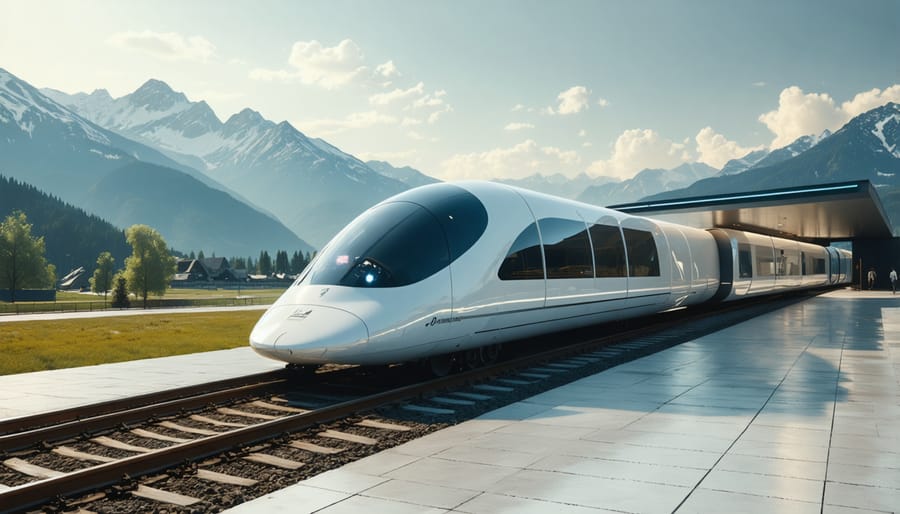
Environmental Benefits and Sustainable Tourism
Reducing Carbon Footprint
When it comes to environmental impact, hyperloop technology stands out as a game-changer among sustainable park transportation options. Unlike traditional trains or cars that emit significant amounts of CO2, hyperloop pods are powered by renewable energy sources, primarily solar and wind power. For example, a single hyperloop route between Toronto and Ottawa could reduce carbon emissions by an estimated 58% compared to current transportation methods.
The system’s sealed tube design also minimizes noise pollution and habitat disruption along its route, making it particularly suitable for preserving our natural spaces. Plus, since hyperloop tracks can be elevated or underground, they require less land clearing than conventional railways or highways. This means more of our precious green spaces can remain untouched!
Here’s something exciting: studies suggest that a hyperloop system serving Ontario’s parks could eliminate the equivalent of 50,000 cars worth of emissions annually. That’s like planting a forest the size of 500 football fields! By choosing hyperloop travel, you’re not just getting to your favorite park faster – you’re helping protect it for future generations to enjoy.
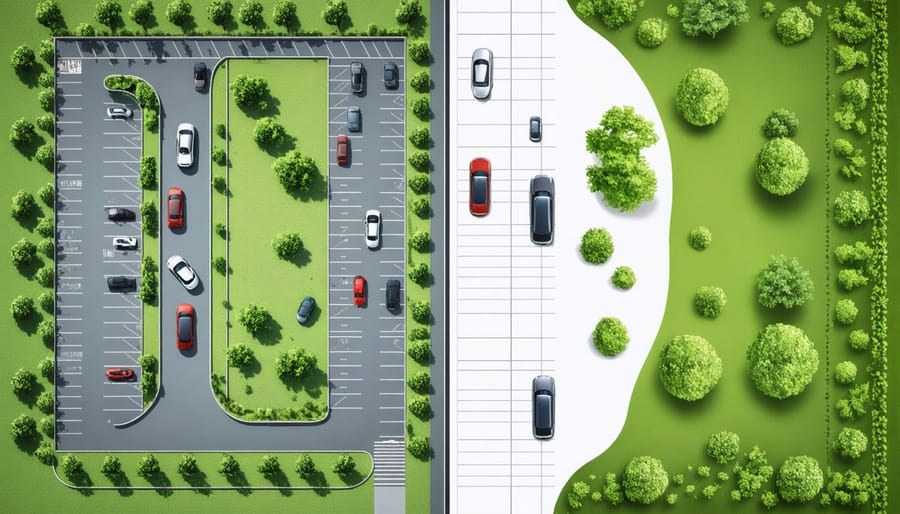
Preserving Park Ecosystems
With hyperloop technology potentially reducing the number of cars on our roads, our beloved parks stand to gain significantly. The shift away from traditional vehicle traffic means fewer exhaust emissions affecting plant life and less noise pollution disturbing wildlife. Park rangers have long observed how reduced traffic leads to more frequent wildlife sightings and healthier vegetation along trail edges.
Imagine walking through your favorite park without the distant hum of highway traffic or breathing in truly fresh air, undiluted by vehicle emissions. This could soon become reality as hyperloop systems take over major transportation corridors. The natural soundscape of birdsong, rustling leaves, and flowing water would become more prominent, enhancing visitors’ connection with nature.
Furthermore, less need for extensive parking lots means parks can reclaim paved areas for native plant restoration and new recreational spaces. Some parks are already drawing up plans to convert underused parking areas into butterfly gardens, picnic grounds, and natural play areas for children. This transformation not only benefits local ecosystems but also creates more meaningful outdoor experiences for visitors.
Reimagining Park Visits
Day Trips Made Easy
Imagine waking up on a sunny Saturday morning and deciding to spend the day at your favorite provincial park – only now, thanks to hyperloop technology, even the most distant natural wonders are just a short ride away. This revolutionary transportation system is set to transform how we experience Ontario’s outdoor spaces, making spontaneous adventures more accessible than ever before.
With hyperloop stations strategically placed near major urban centers and park entrances, what was once a four-hour drive to Algonquin Park could become a breezy 30-minute journey. This enhanced remote park accessibility means you could enjoy a morning hike in the Kawarthas and still make it back home for dinner.
The environmental benefits are equally exciting. By reducing the number of cars on the road, hyperloop technology helps preserve the natural beauty we’re all seeking to experience. Imagine arriving at your favorite trail without the stress of traffic or the guilt of a large carbon footprint.
For families and outdoor enthusiasts, this means more quality time spent in nature rather than in transit. Weekend warriors can squeeze in extra adventures, while casual visitors might be more inclined to explore parks they previously considered too far away. The future of park visits is about to become as swift and efficient as it is environmentally conscious.

Enhanced Camping Experience
The introduction of hyperloop technology promises to revolutionize how we experience the great outdoors. Imagine waking up in downtown Toronto and reaching your favorite campground in Algonquin Park just 30 minutes later. This quantum leap in transportation will make spontaneous camping trips and outdoor adventures more accessible than ever before.
For weekend warriors and nature enthusiasts, the hyperloop will eliminate the traditional hurdles of long drives and traffic congestion. You could finish work on Friday afternoon and be setting up your tent before sunset, maximizing your time under the stars. This enhanced accessibility won’t just benefit casual campers – it will open up new possibilities for outdoor education programs, guided nature walks, and wildlife photography sessions.
The quick travel times will also allow outdoor enthusiasts to explore multiple parks in a single weekend, creating opportunities for diverse experiences without sacrificing precious vacation days. Morning hiking in the Niagara Escarpment could be followed by afternoon kayaking in Georgian Bay, all while reducing the carbon footprint typically associated with such adventures.
However, this improved access comes with a responsibility to preserve these natural spaces. Parks will need to implement smart capacity management systems and enhanced trail maintenance programs to ensure sustainable tourism growth. The future of camping looks bright, with hyperloop technology striking a balance between accessibility and conservation.
Challenges and Timeline
While the hyperloop concept is incredibly promising, it faces several significant hurdles before becoming a reality. The biggest challenge is the massive infrastructure investment needed – experts estimate costs between $20-40 million per kilometer. Engineering teams are still working to perfect the vacuum tube technology and safety systems, which need extensive testing before public use.
Current timelines suggest we might see the first commercial hyperloop systems operating between 2030-2035, though these estimates remain fluid. Several test tracks are already under construction, with Virgin Hyperloop and Hyperloop Transportation Technologies leading the way. The first routes will likely connect major city pairs less than 500 kilometers apart, where the hyperloop’s speed advantage makes the most economic sense.
Another crucial challenge is securing government approvals and establishing safety regulations. Since hyperloop is an entirely new form of transportation, regulatory frameworks need to be built from scratch. Environmental impact studies, land acquisition, and public consultations will also take considerable time.
Here in Ontario, preliminary studies are exploring potential routes between Toronto and Montreal, though implementation would likely be at least 15-20 years away. The harsh winter conditions pose unique engineering challenges that need innovative solutions.
The good news is that technological advances are happening faster than expected. Recent successful passenger tests have boosted confidence in the system’s viability. While we might need to be patient, the hyperloop’s potential to revolutionize transportation makes these challenges worth tackling. In the meantime, ongoing developments in materials science and magnetic levitation technology continue to bring us closer to this exciting future.
As we look to the future of park accessibility, hyperloop technology promises to revolutionize how we experience Ontario’s natural wonders. With lightning-fast travel times and minimal environmental impact, this groundbreaking transportation system will bring our beloved parks closer than ever before. Imagine starting your day in downtown Toronto and being at the pristine shores of Lake Superior just an hour later! This isn’t just about convenience – it’s about creating sustainable access to nature while preserving the very wilderness we cherish. By reducing traditional vehicle traffic and integrating eco-friendly design principles, hyperloop stations will serve as gateways to adventure while maintaining the delicate balance of our park ecosystems. As this technology takes shape, we’re not just dreaming of a more connected future – we’re building it, one sustainable pod at a time. Get ready to experience Ontario’s great outdoors in ways we never thought possible!

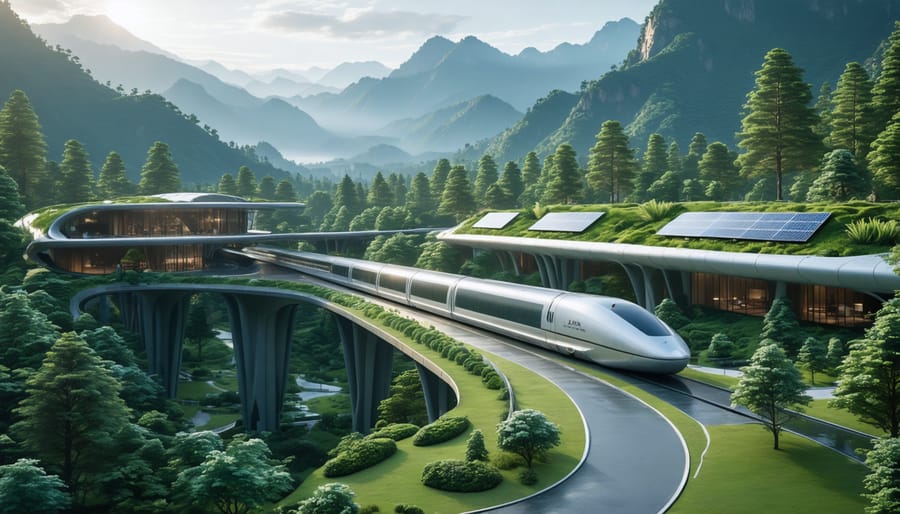


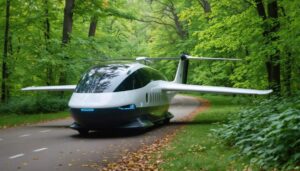

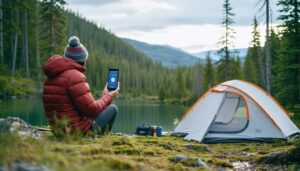


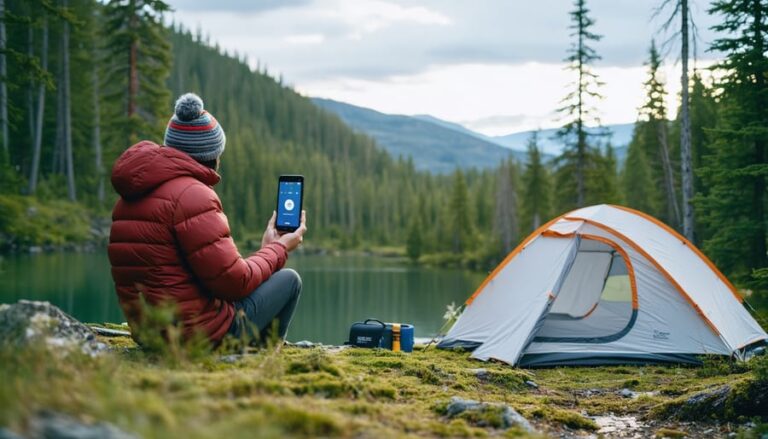




+ There are no comments
Add yours